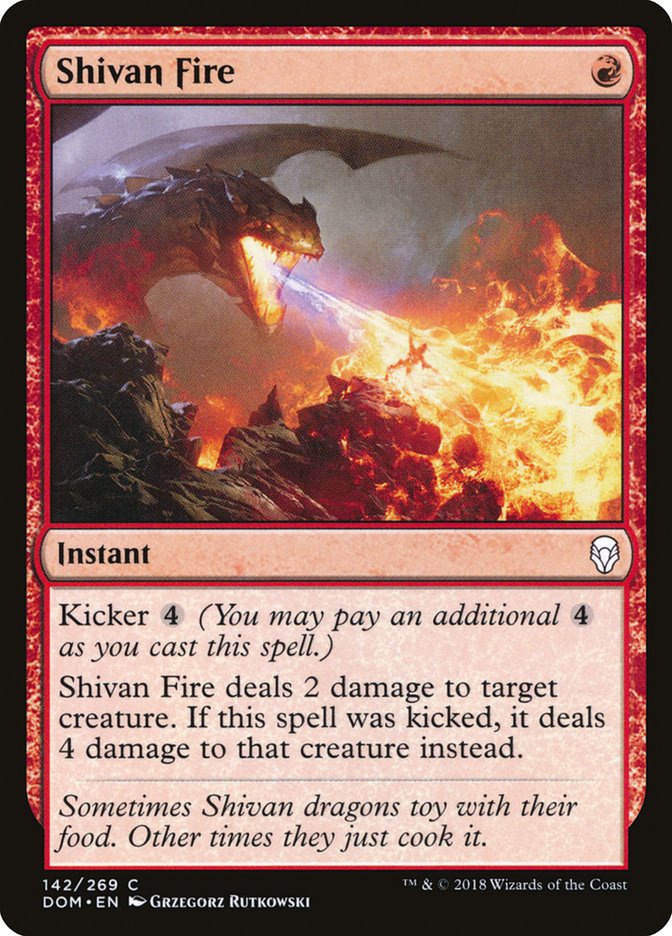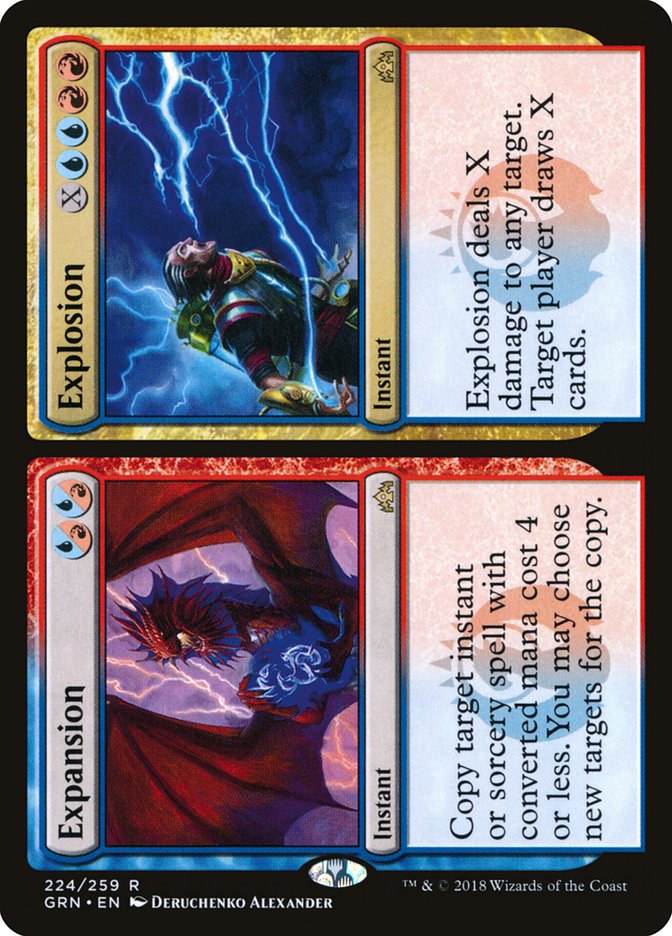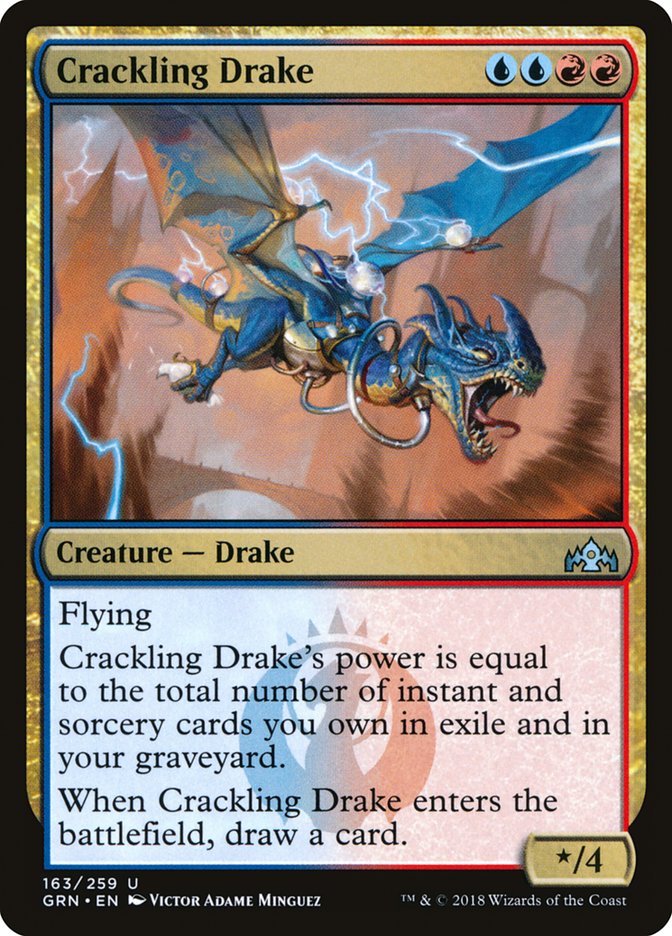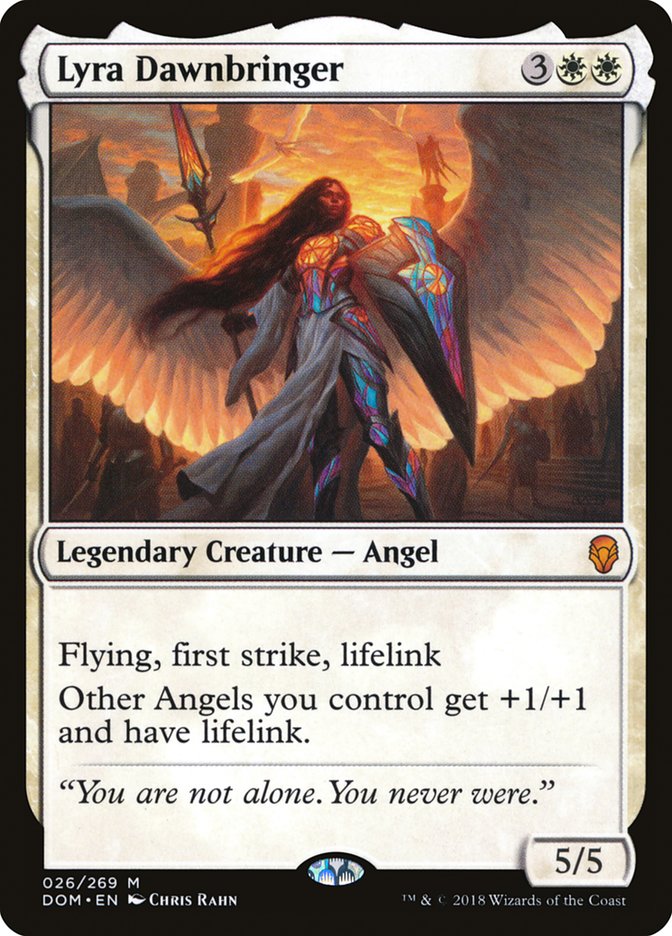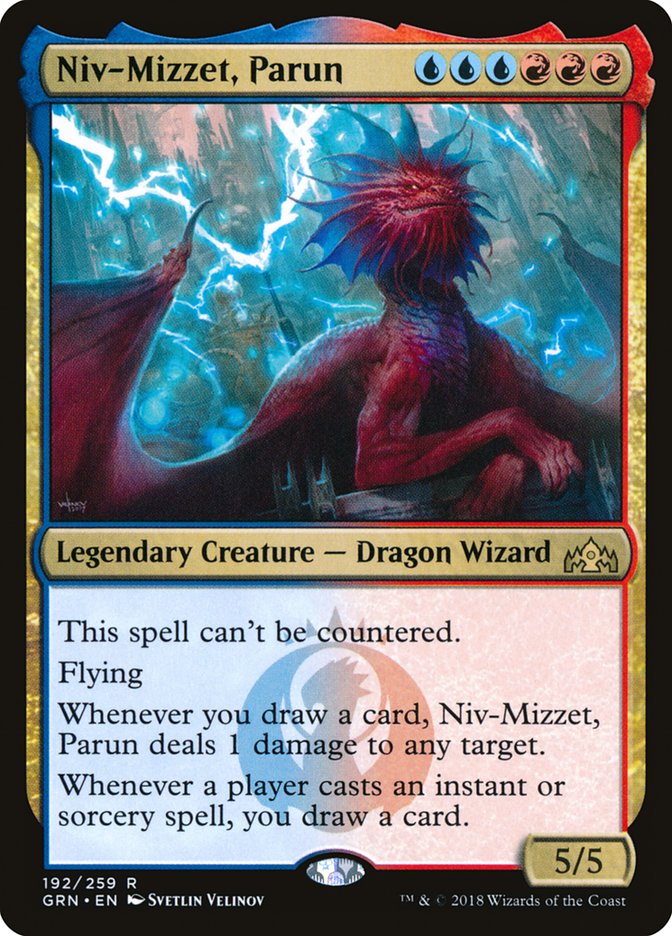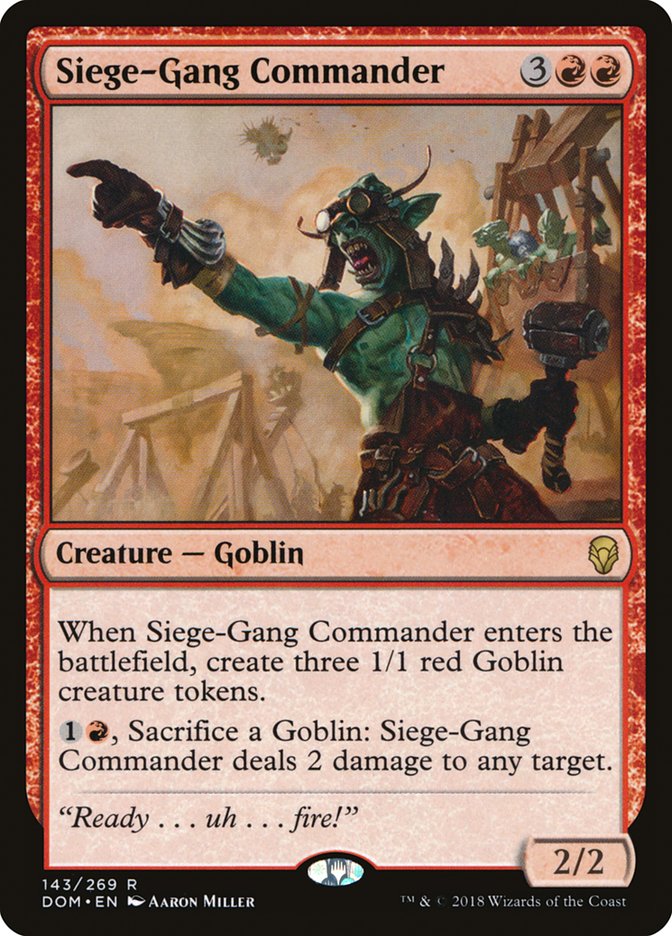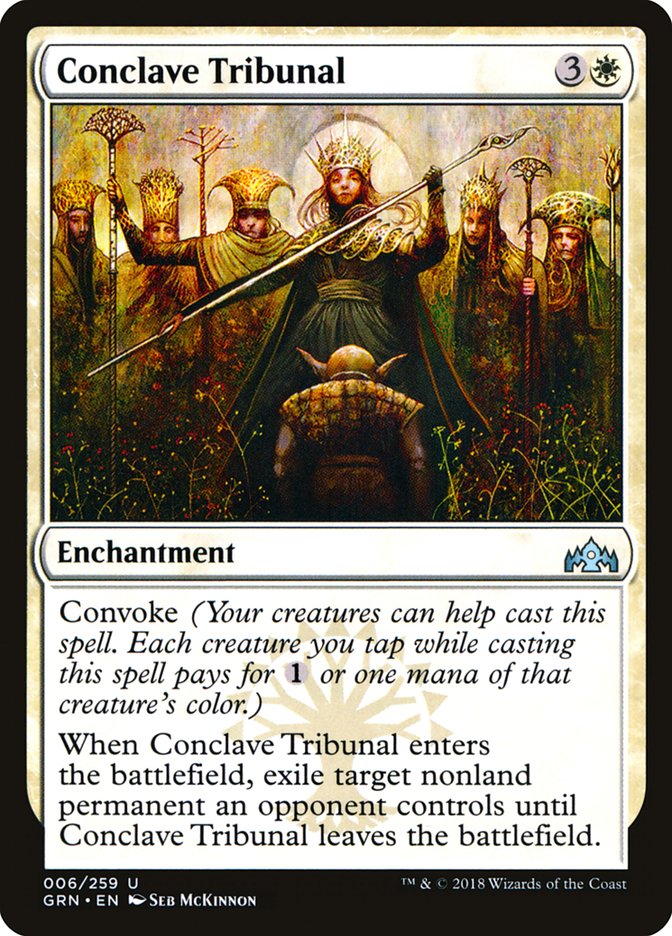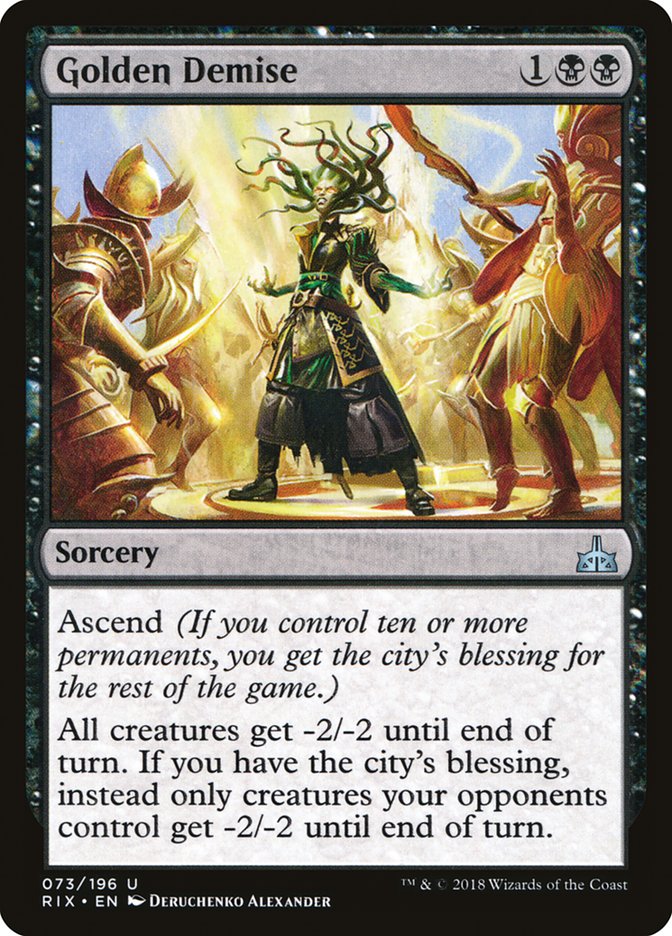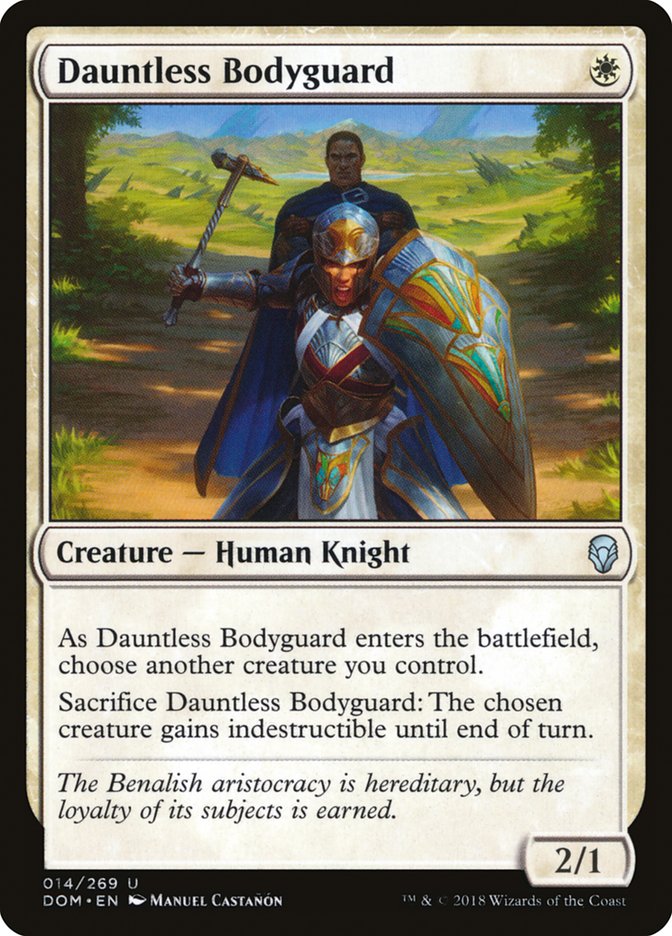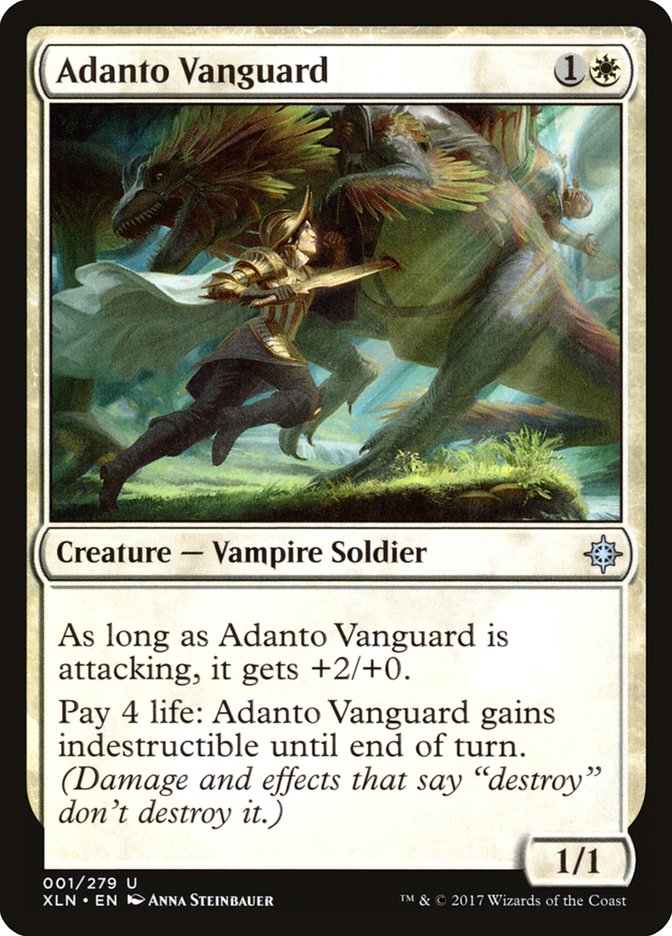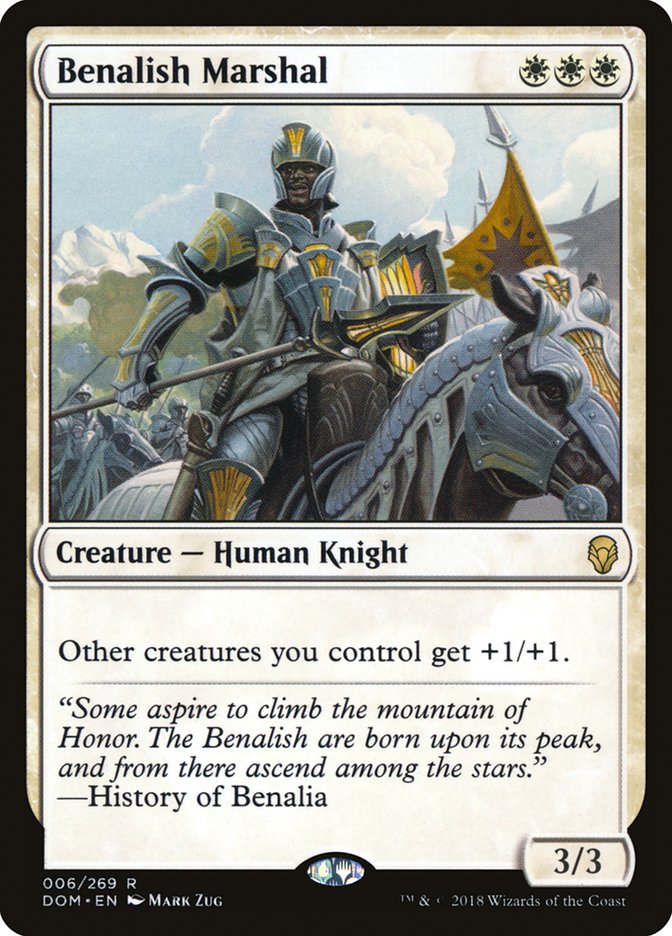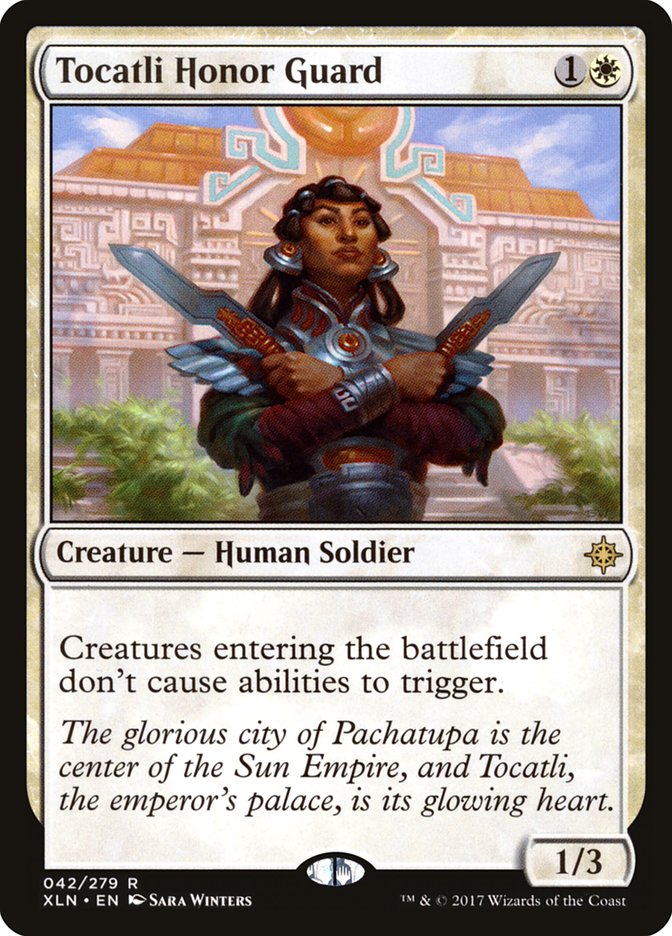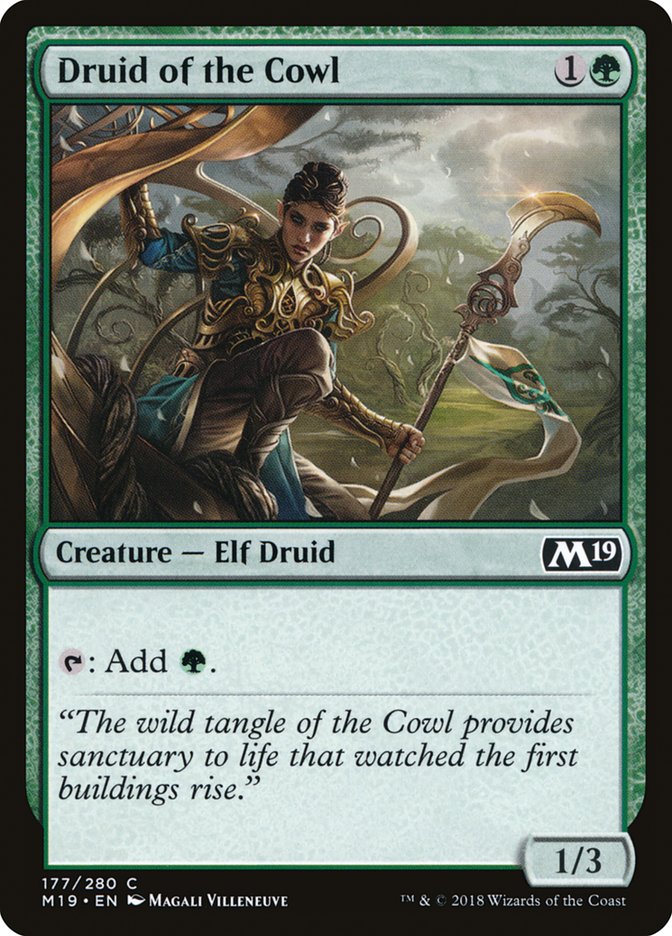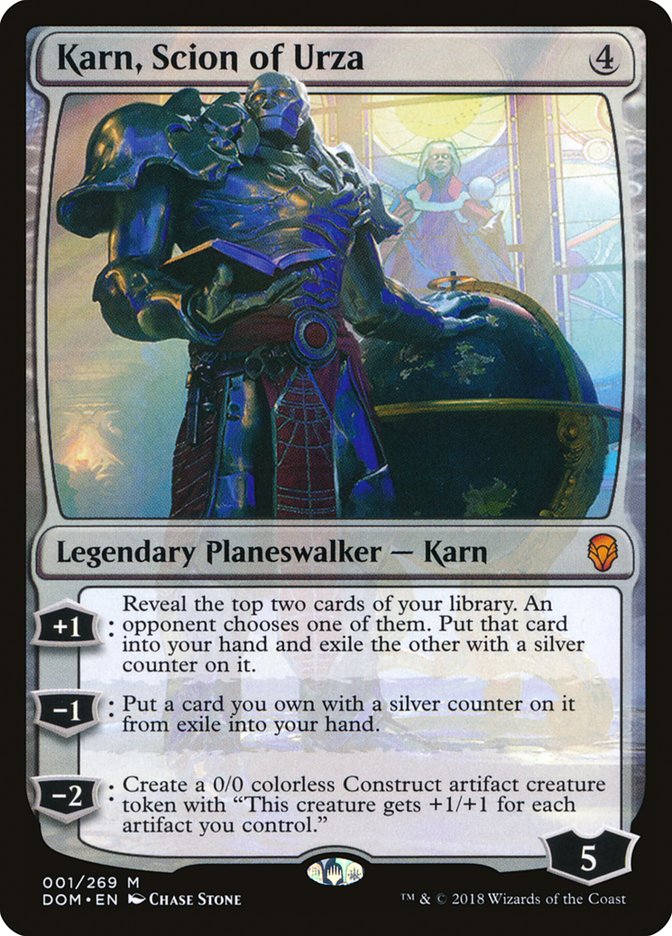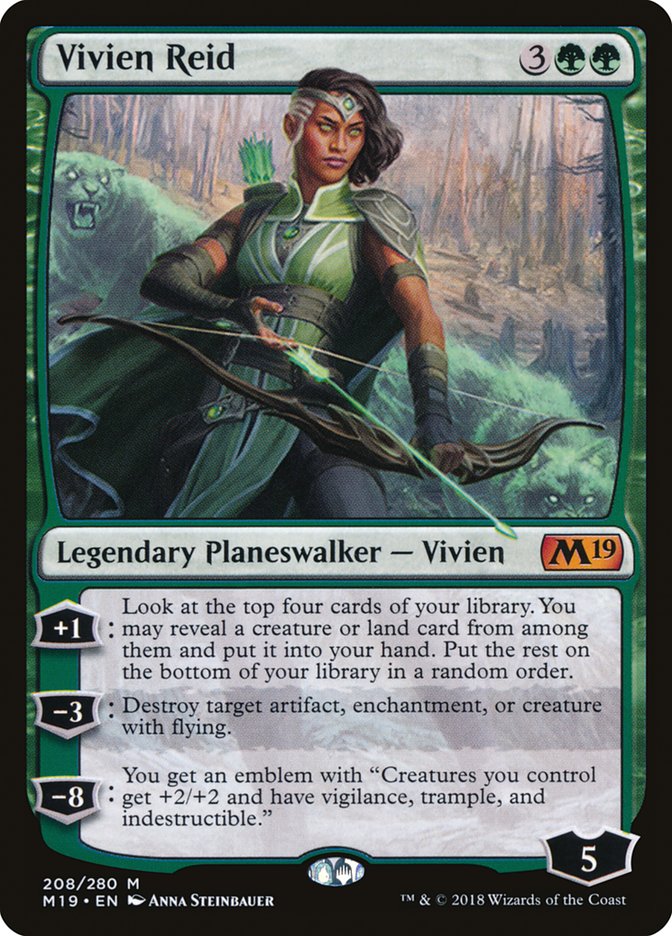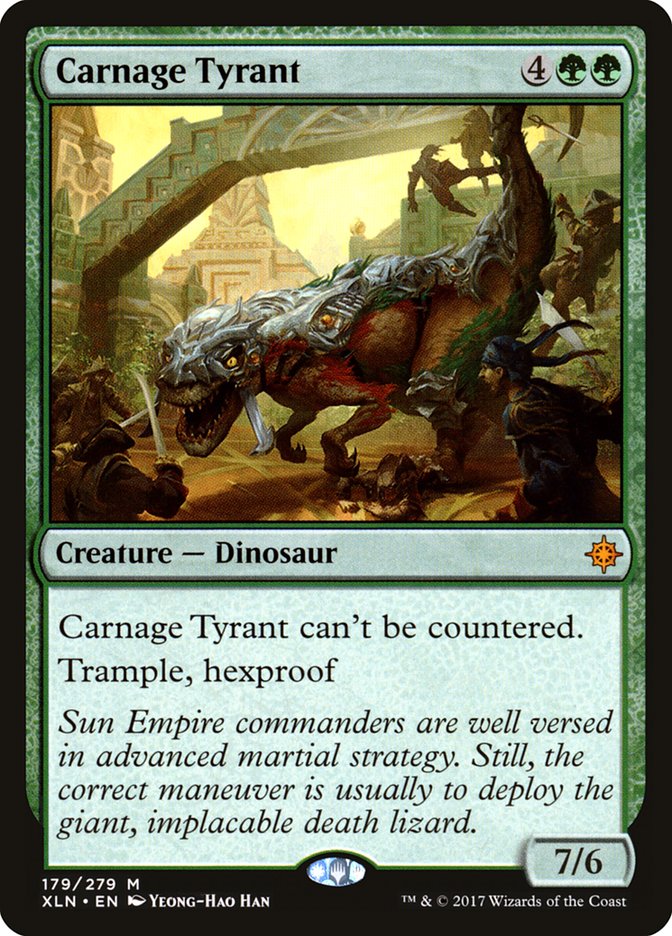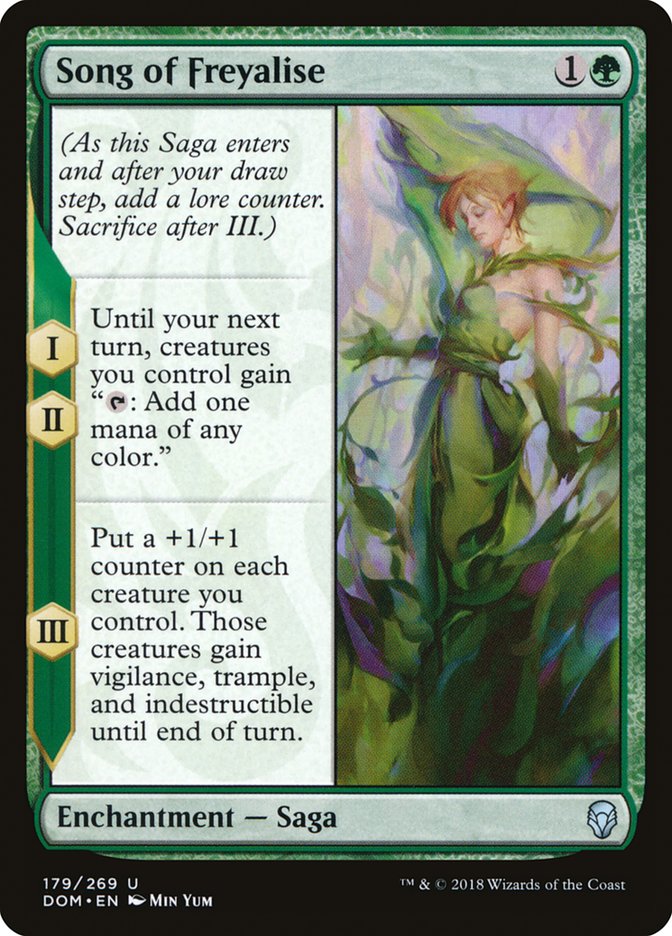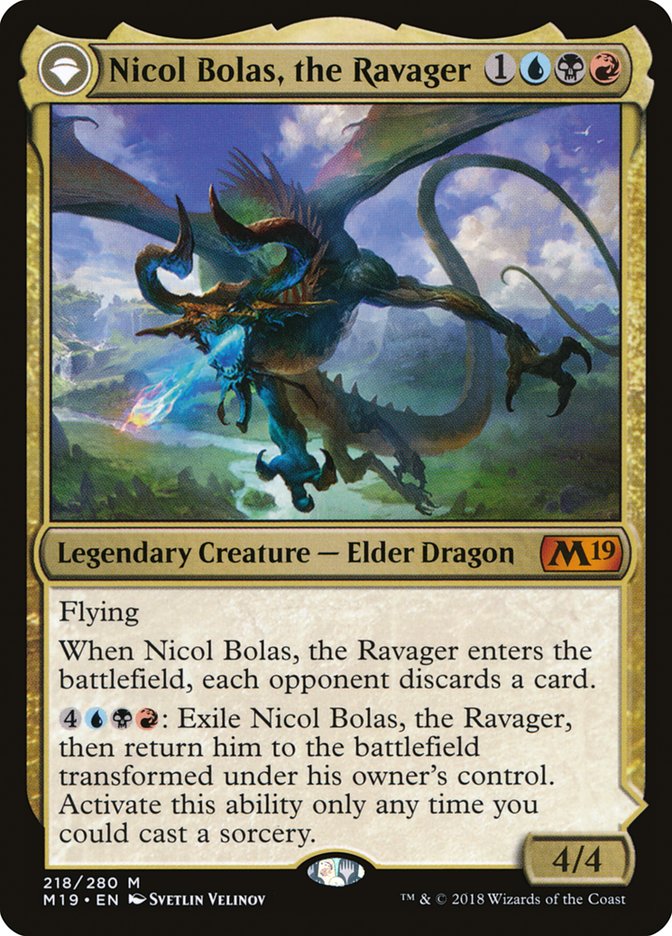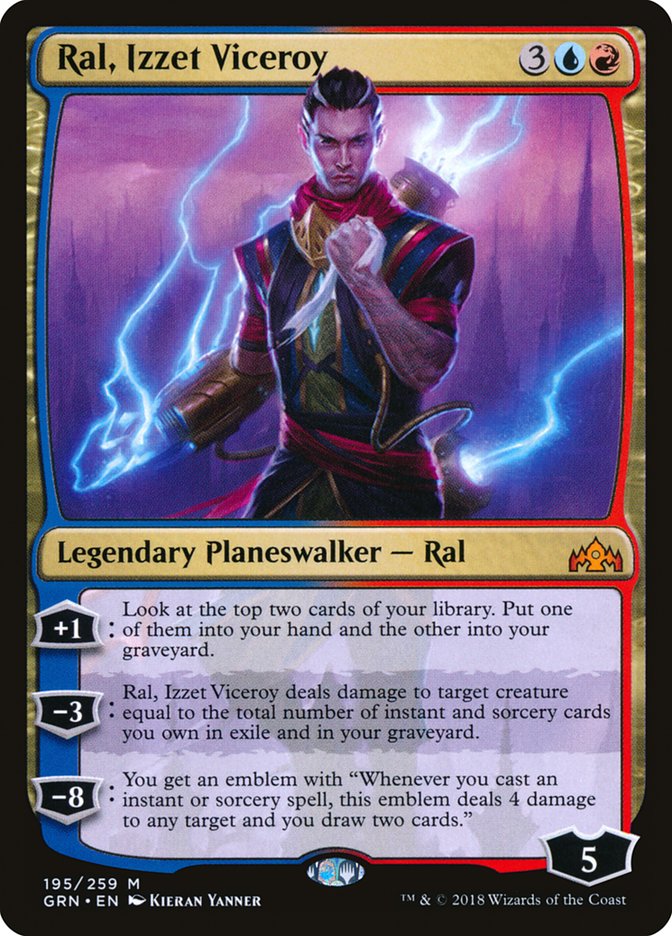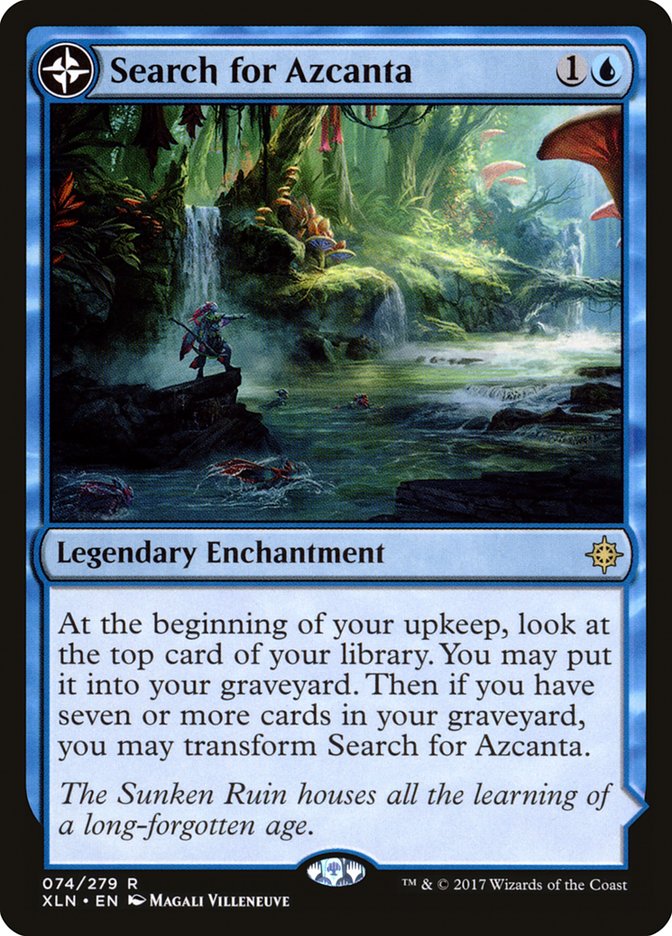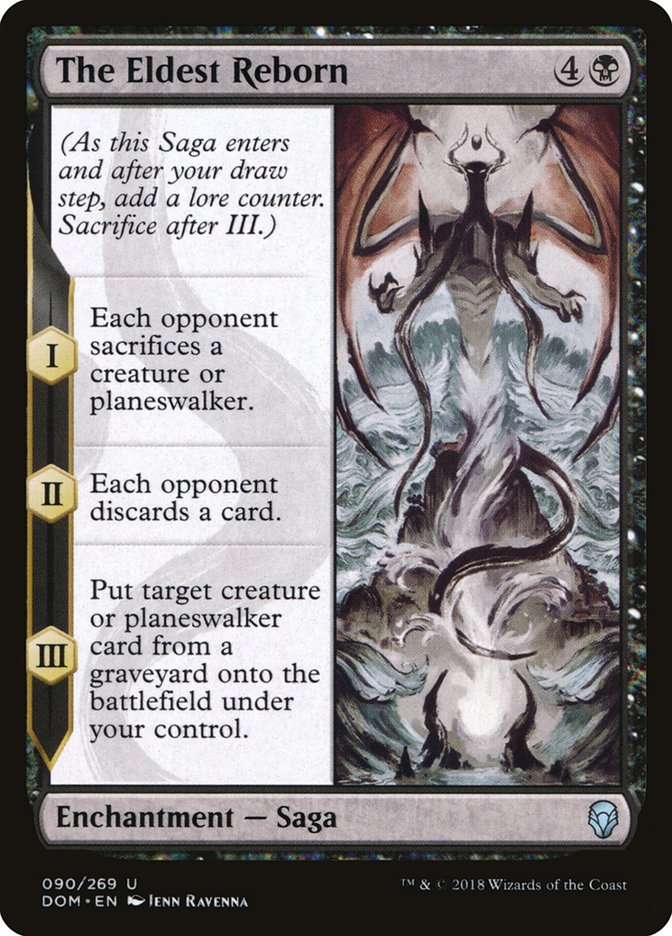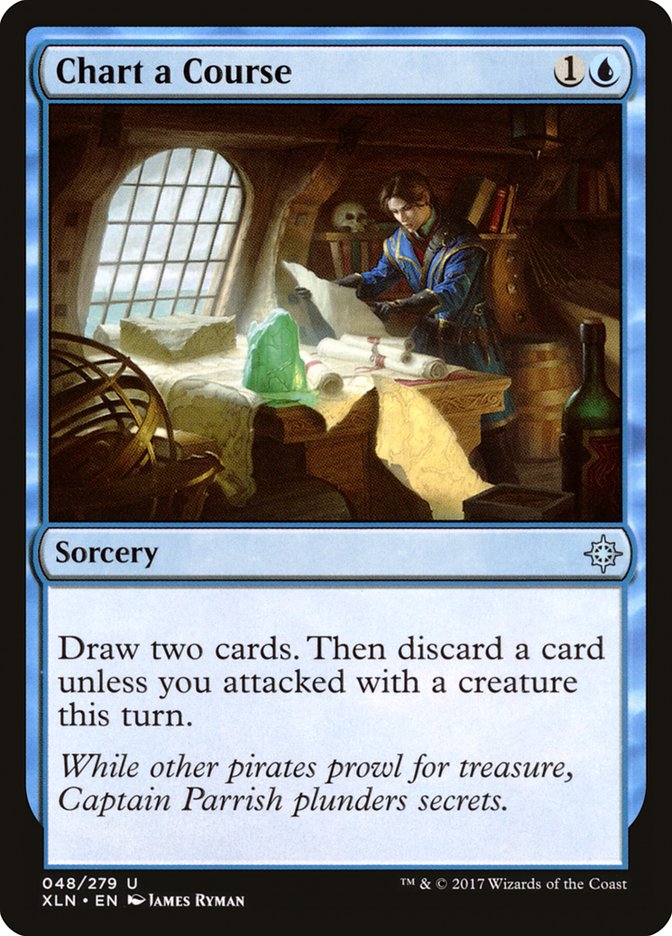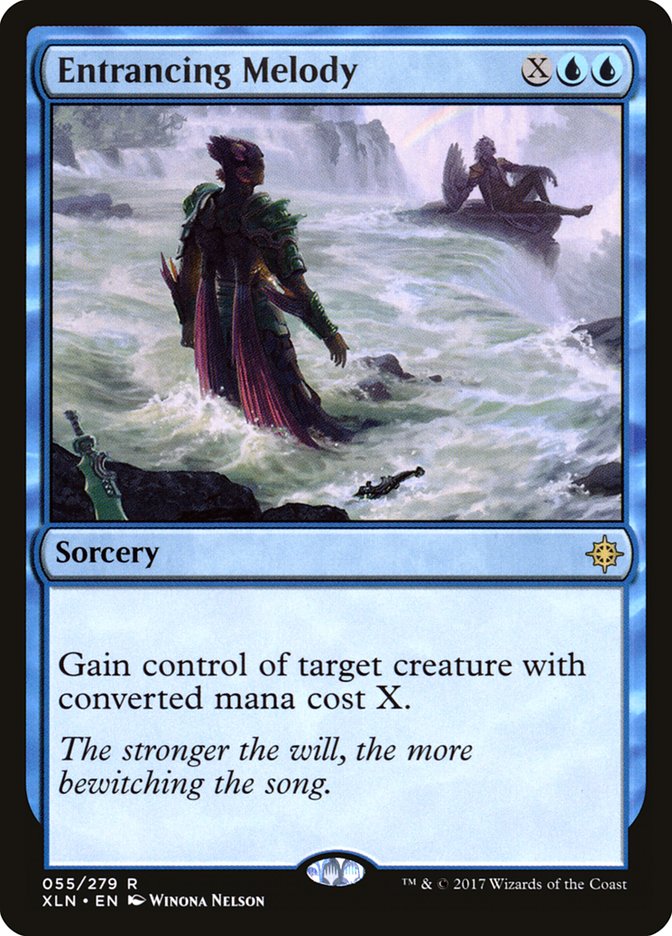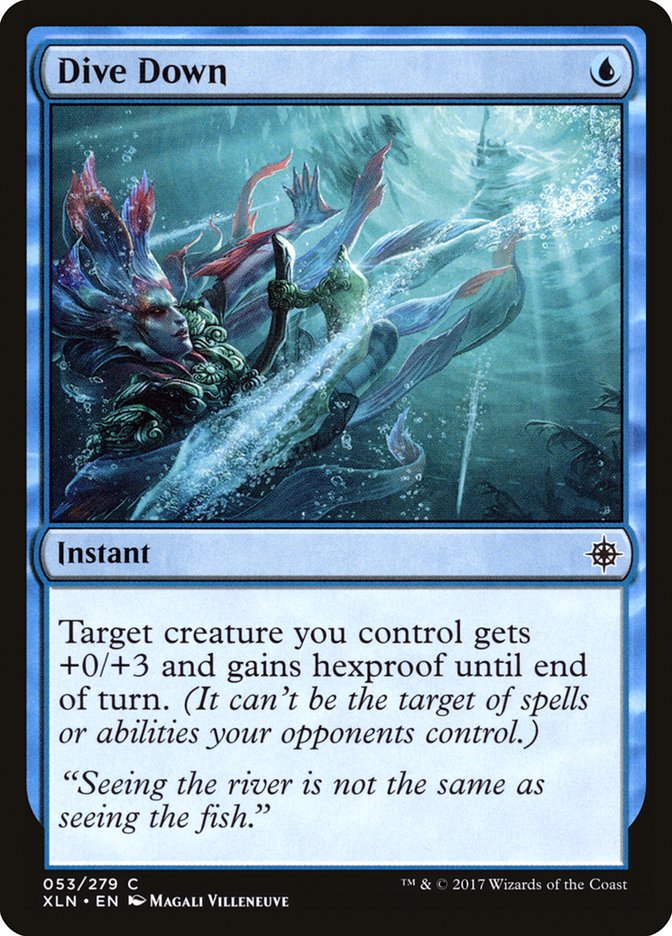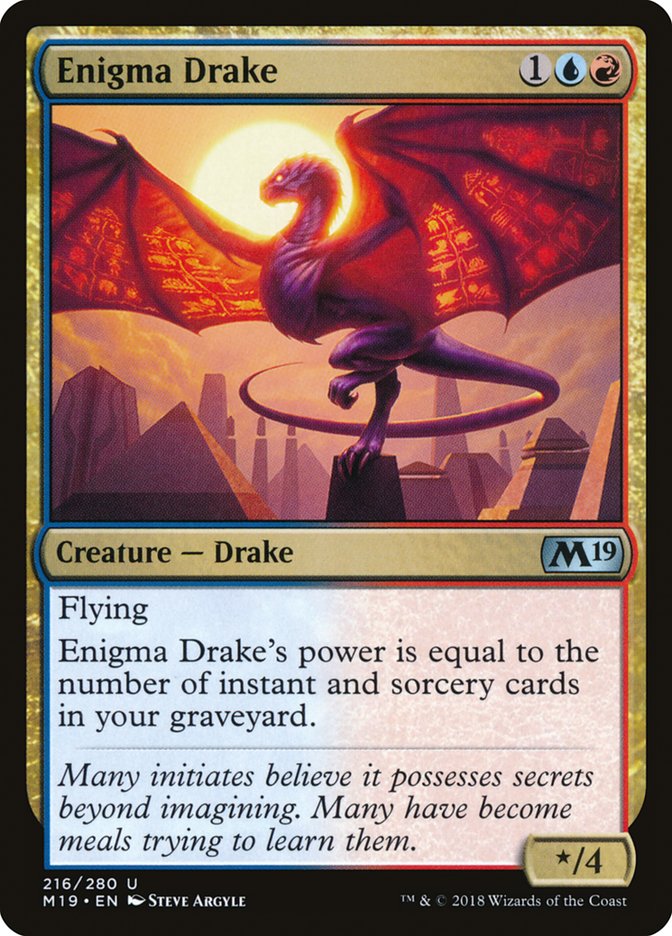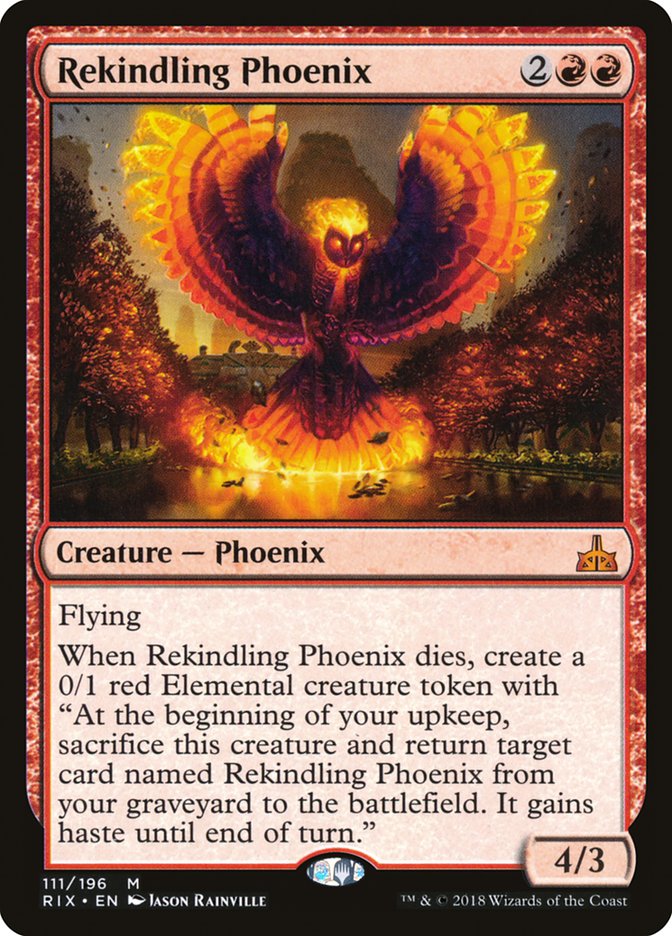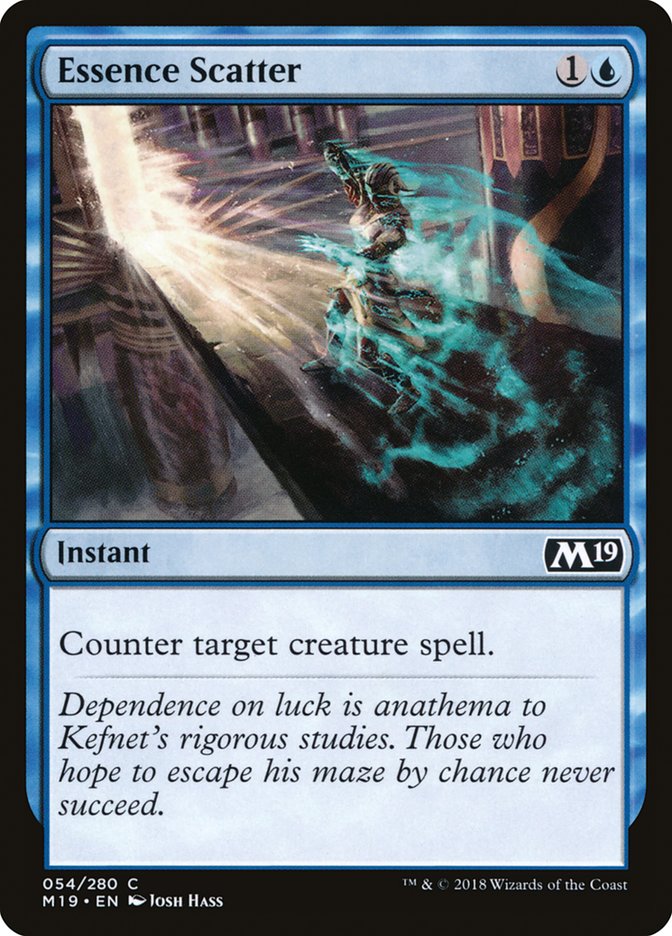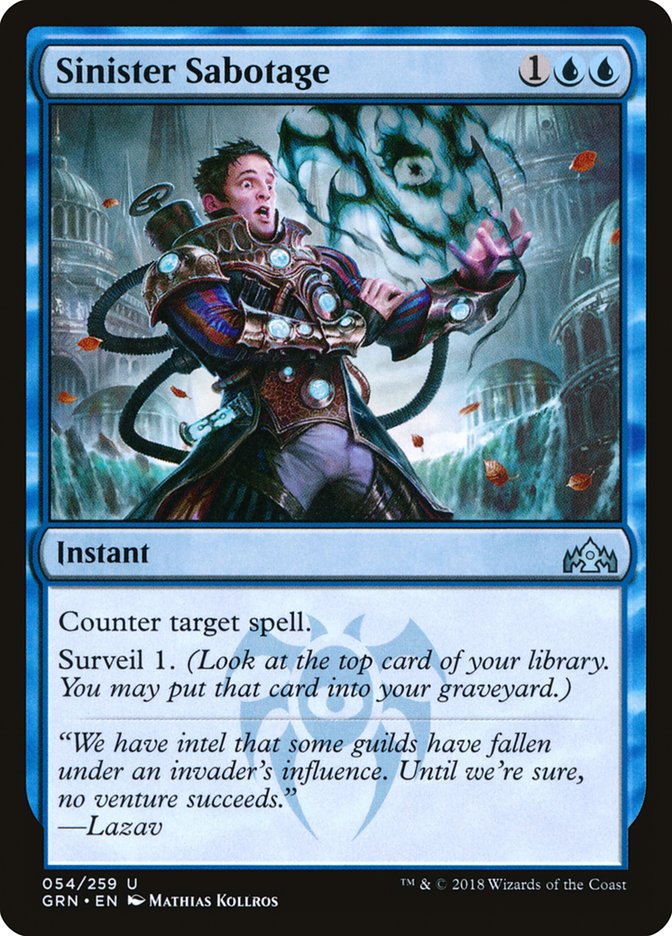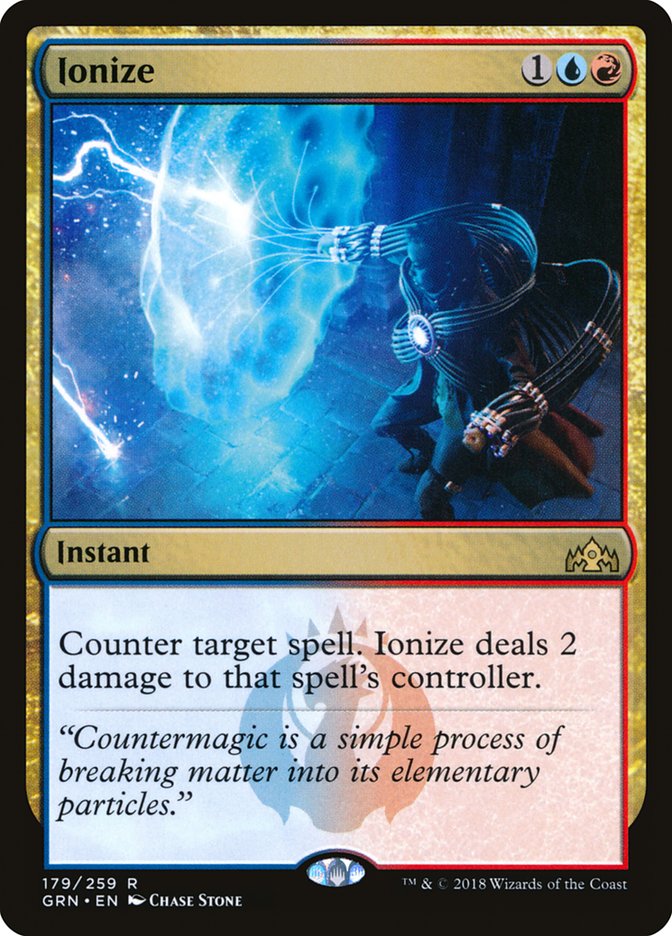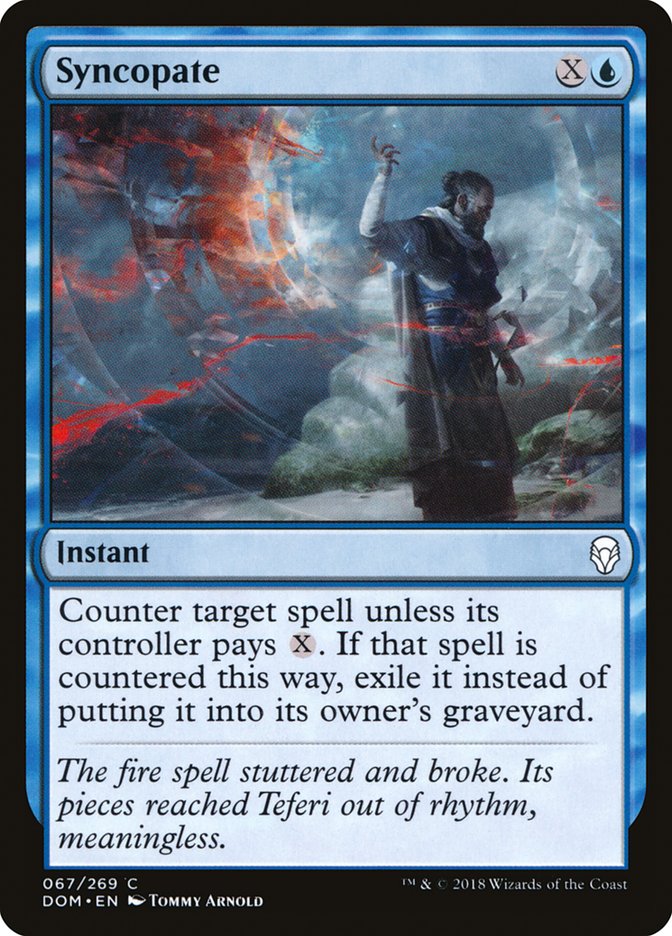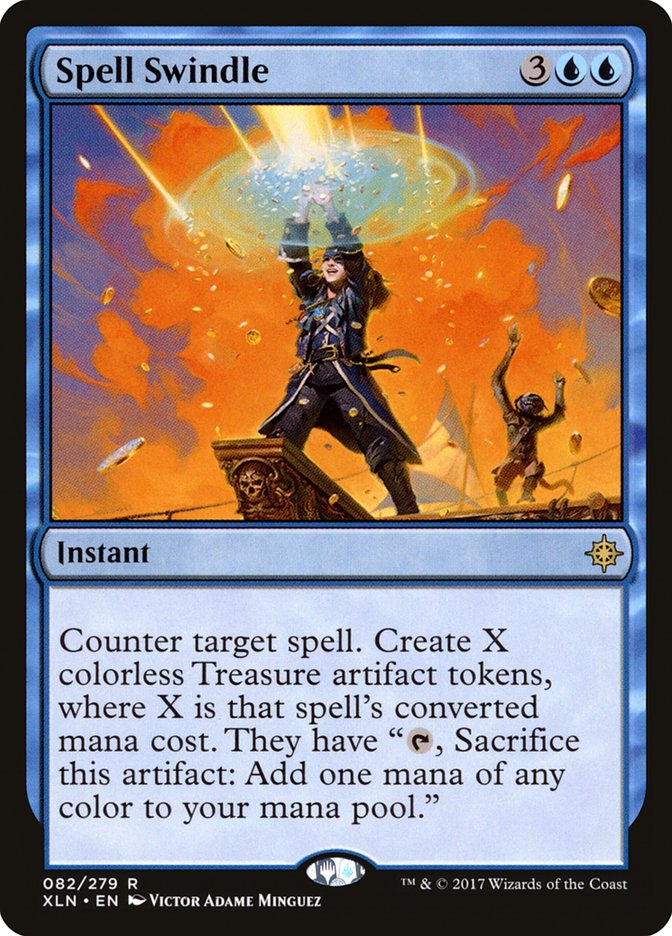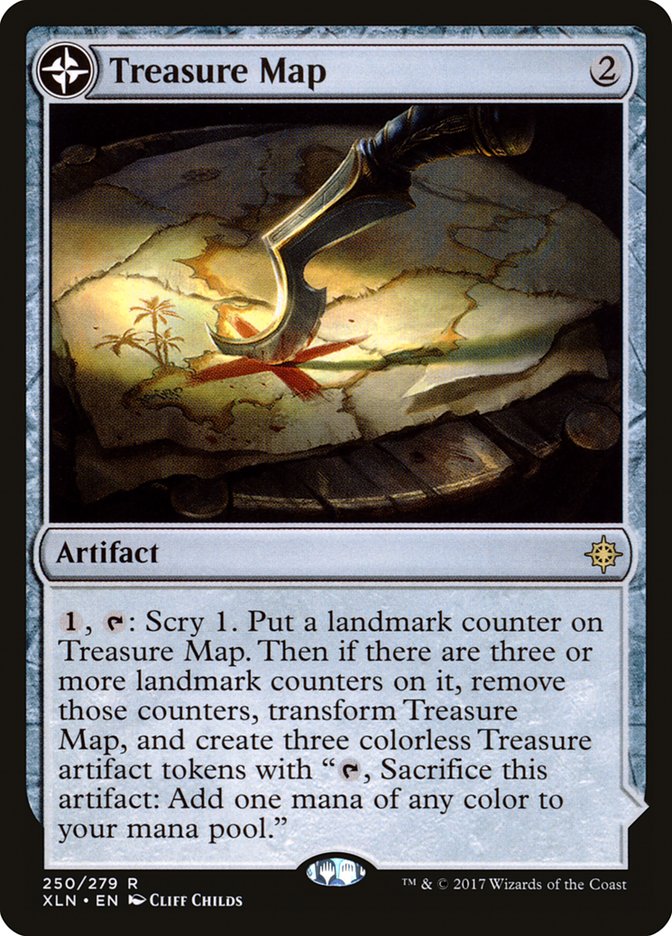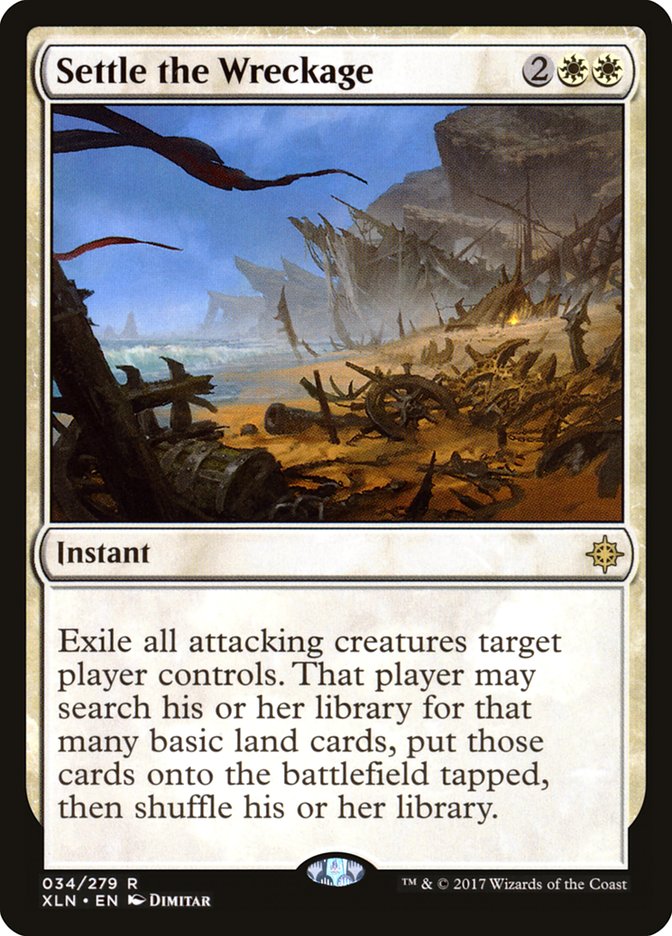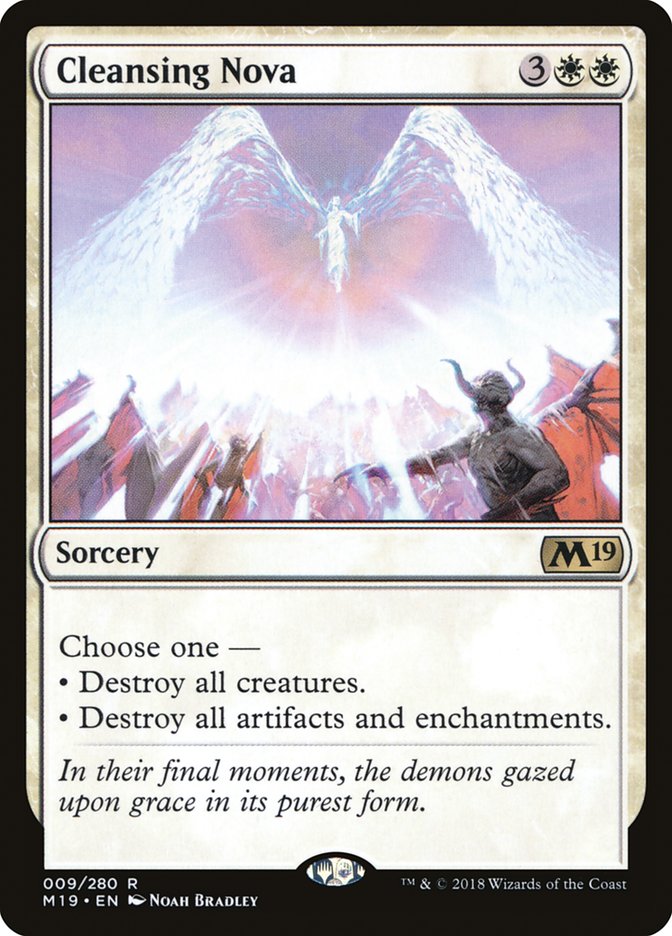Pro Tour Guilds of Ravnica proved just how rich and diverse of a
format Standard is now. Despite two months of high-level play, the Pro Tour
definitely didn’t suggest a solved format, and the evolution has continued
over the past week. Today, I’d like to take a look at the top 10 pieces of
technology to come out of this past weekend.
10. Shivan Fire
With the overwhelming explosion of white aggro at the Pro Tour, Shivan
Fire’s stock has skyrocketed. These decks are playing sixteen or more
one-drops and having a one-mana answer is one of the absolute best ways to
avoid letting them pull way ahead on tempo.
This weekend was a great weekend for Jeskai Control, and Michael Hamilton
put Shivan Fire to good use in both the maindeck and sideboard of his
ninth-place build:
Creatures (3)
Planeswalkers (2)
Lands (21)
Spells (34)

Interestingly, Michael only played one copy of Deafening Clarion, instead
relying on a diverse mix of Shivan Fire, Seal Away, Justice Strike,
Ixalan’s Binding, Settle the Wreckage, and Cleansing Nova to help clean up
problematic creatures.
The intriguing diversity in Michael’s list didn’t stop there, either. His
mix of victory conditions was wider than we usually see:
As if that wasn’t enough possible angles of attack, Michael’s list also
features card number nine on our list, out of the sideboard (though one I
can’t help but wonder if should be in more maindecks).
9. Siege-Gang Commander
Siege-Gang Commander is a powerful card in its own right, and the timing
might be just about perfect. Having four possible blockers against white
aggro or red aggro is huge, and if you untap with it, the sacrifice ability
only further takes over the game.
Is it crazy to consider sideboarding Siege-Gang Commander in Mono-Red
Aggro? Would full-on Goblins be off the table?
Creatures (32)
- 1 Goblin Warchief
- 4 Siege-Gang Commander
- 4 Fanatical Firebrand
- 4 Goblin Chainwhirler
- 4 Goblin Instigator
- 4 Volley Veteran
- 2 Dark-Dweller Oracle
- 4 Legion Warboss
- 4 Runaway Steam-Kin
- 1 Goblin Cratermaker
Lands (1)
Spells (27)
Sideboard

Alternatively, you could sort of take a page out of the Boros playbook and
splash white for Conclave Tribunal or something.
Maybe there’s just not enough incentive from the Volley Veterans, but I’d
at least be interested in kicking the tires on the strategy. It’s just so
hard to get away from the straightforward red cards like Runaway Steam-Kin,
however, and it doesn’t take many of those before you might as well give up
on Goblins as a tribe.
Of course, one big risk to trying the Goblin route is just how much more
vulnerable Goblins is to Golden Demise than traditional red aggro.
8. Golden Demise
While Deafening Clarion has been a more defining card and is certainly more
powerful in a vacuum, Golden Demise has surged in popularity and success
this week, serving as a sweeper for other color combinations, and in
particular, one that lines up well against Dauntless Bodyguard and Adanto
Vanguard.
White aggro decks play such a huge number of one-drops, a three-cost
sweeper can be game-winning. Usually, Dauntless Bodyguard and Adanto
Vanguard are important ways for the white decks to hedge against this, but
Golden Demise completely cuts out this counterplay. It isn’t without some
drawbacks, however.
Benalish Marshal both lives through Golden Demise and sometimes makes
creatures like History of Benalia Knight tokens live through it. Tocatli
Honor Guard is also a popular sideboard card that can be potentially
devastating to a Golgari deck, and it definitely sucks to get stuck behind
one with only Golden Demise for removal. Nevertheless, Golden Demise is so
effective against the rest of their deck, hopefully you can help blunt some
of the effectiveness of Tocatli Honor Guard by sideboarding out two-drop
explore creatures, for instance.
Creatures (24)
- 4 Llanowar Elves
- 1 Carnage Tyrant
- 4 Wildgrowth Walker
- 4 Merfolk Branchwalker
- 2 Seekers' Squire
- 4 Jadelight Ranger
- 2 Ravenous Chupacabra
- 3 Doom Whisperer
Planeswalkers (2)
Lands (16)
Spells (18)

Obviously, Deafening Clarion isn’t an option here, but the use of Golden
Demise along creatures actually big enough to live through it can be
deceptively strong. Each Thrashing Brontodon sort of functions like an Icy
Manipulator, forcing your opponent to overcommit, meaning the sweeper is
that much more effective.
7. Druid of the Cowl
Newly inducted Hall of Famer Seth Manfield actually took the Golden Demise
plan a step further with his use of Druid of the Cowl instead of Seekers’
Squire.
Creatures (24)
- 4 Llanowar Elves
- 2 Druid of the Cowl
- 3 Carnage Tyrant
- 3 Wildgrowth Walker
- 4 Merfolk Branchwalker
- 4 Jadelight Ranger
- 3 Ravenous Chupacabra
- 1 Midnight Reaper
Planeswalkers (5)
Lands (15)
Spells (16)

Instead of Doom Whisperer as his primary “big plan,” Seth made use of Karn,
Scion of Urza and more Vivien Reids than most, not to mention three Carnage
Tyrants maindeck.
Golgari was on the rebound this week, with smaller numbers, but a little
more success, relatively speaking. Of the many variations, I think Seth’s
was my favorite. He made the necessary adjustments for gaining ground
against these new white decks, while also anticipating a rise in Jeskai
Control, which he was extremely well set up against. He also avoided
spending too many slots on improving the Selesnya Tokens matchup, possibly
anticipating the rest of the format adjusting and suppressing the
archetype.
While Selesnya Tokens failed to put anyone in the top 8 at the Pro Tour, it
wasn’t for lack of Standard success from its pilots. This weekend,
Selesnya’s results were more modest; however, Nick Prince was a notable
exception, with his SCG Classic win in Vegas, armed with some exciting new
technology.
6. Song of Freyalise
Song of Freyalise is a really interesting turn 3 or turn 4 play for
Selesnya Tokens, functioning as a sort of ritual the turn you play it,
setting up a massive mana boost the following turn, letting you drop most
of your hand and setting up the kill, for the following turn.
Creatures (13)
- 1 Lyra Dawnbringer
- 2 Shalai, Voice of Plenty
- 4 Thorn Lieutenant
- 3 Emmara, Soul of the Accord
- 3 Trostani Discordant
Lands (8)
Spells (39)
- 4 Forest
- 9 Plains
- 3 Legion's Landing
- 4 History of Benalia
- 3 Song of Freyalise
- 4 Saproling Migration
- 4 Conclave Tribunal
- 4 March of the Multitudes
- 4 Flower
Sideboard

While Song of Freyalise isn’t necessarily what you want against Jeskai
Control, it is a powerful weapon for filling the battlefield quickly
against white aggro or Golgari and something I would definitely try moving
forward. I still don’t think I’d want to be caught up in the collateral
damage from folks targeting white aggro, but if your metagame is closer to
the Classic metagame than the Grand Prix metagame (less Jeskai, more
Golgari), this could be a good pick.
5. Nicol Bolas, the Ravager
YES.
Nicol Bolas is back, thanks in large part to Justin Andrus’s role in the
rise of Golden Demise. While Nicol Bolas isn’t at his best against fast
white aggro, it does have a ton of value against the Jeskai decks that were
all the rage this weekend. While Justin kept two of his three in the
sideboard, they provided a powerful weapon against control decks trying to
fight his heavy Planeswalker/Enchantment-based strategy.
Creatures (6)
Planeswalkers (5)
Lands (23)
Spells (27)

With Ral, Izzet Viceroy and Karn, Scion of Urza to accompany his basically
unheard of three Search for Azcantas and two plus two The Eldest Reborn,
Justin’s list is built for winning card advantage battles on the table like
few other decks in the format even begin to aspire to.
While I might be biased towards the one true God-Pharaoh, this list looks
super exciting to me and I’m going to be working on it in the week to come.
I’m particularly interested in getting to play Chart a Course, which I
think is just so underrated. I know people play it, but I really
think they should be playing it a lot more.
Even with just six maindeck creatures, it looks great in Justin’s deck. The
filtering and smoothing is fine and it helps power up Search for Azcanta
and Ral, Izzet Viceroy. Besides, Ravenous Chupacabra is great for
triggering the bonus and Karn’s token is frequently left on the
battlefield, even when an opponent has a removal spell they could have
potentially used.
Chart a Course is nothing new in Izzet, but I especially like the direction
former player of the year and current team World Champion Owen Turtenwald
took the archetype by including a full playset of Radical Ideas and two
Tormenting Voice for even more Chart a Course-like action.
Creatures (12)
Lands (8)
Spells (40)

Arclight Phoenix is obviously key to these decks anyway, but Owen’s version
is extra-long on ways to get an extra card out of the Phoenix (by
discarding it, instead of playing it), while also being longer on ways to
bring it back multiple times.
Perhaps the most interesting part about Owen’s deck, however, is his use of
the number four card in our countdown.
4. Entrancing Melody
Entrancing Melody has been gaining respect as a sideboard option for Izzet
decks, but this weekend, Owen moved one to the maindeck and it looked good
with so many possible ways to loot it away in the wrong matchups.
While I don’t think Jeskai gets enough value out of Entrancing Melody to
make it worth our while, I could possibly see it showing up in Grixis or
some other new blue deck with creatures. We’ve already seen it make waves
in Mono-Blue Aggro. What about in surveil-heavy Dimir?
Speaking of Mono-Blue Aggro, another Mono-Blue Aggro staple found a new
maindeck home this weekend. Grand Prix Milwaukee champion Adrian Sullivan
may have revolutionized the face of Jeskai Control with his radical and
brilliant new take on the popular archetype.
3. Dive Down
While there’s a lot to unpack with Adrian’s list, his use of two copies of
Dive Down in a deck with just seven creatures just leaps out at you from
the page. I can only imagine the looks on the faces of the countless people
that went to kill Niv-Mizzet (possibly drawing Adrian a card, possibly
not), when he played a Dive Down to save it (drawing another card, himself)
and allow him to untap with arguably the most powerful threat in the
format.
With a full four copies of Niv-Mizzet, Adrian is serious in a way few
others are. The fun didn’t stop there, however. Two Enigma Drakes and a
Rekindling Phoenix, in lieu of Crackling Drake?
This one is honestly a little surprising to me, but it does seem like it
might be better against Vivien Reid decks. I’m gonna have to play some
games to see this one for myself.
Check out this new classic Adrian Sullivan masterpiece:
Creatures (7)
Planeswalkers (3)
Lands (25)
Spells (25)

Adrian has never been afraid to kill sacred cows, and here we seem him
running Jeskai with zero copies of three of the most popular counterspells.
Instead, he’s got only minimal early-game permission, with two Ionize, two
Syncopates, and a Spell Pierce.
He’s even got another Spell Pierce in his sideboard, which features only a
single Negate. Instead, he preferred Disdainful Stroke and Spell Swindle(!)
2. Spell Swindle
Spell Swindle is like fairly unwieldy, but if you get it off, you’ve got a
tremendous mana advantage that can be converted into game-winning card
advantage from Expansion or Treasure Map.
Treasure Map, in particular, is fascinating in Adrian’s list. With zero
copies of Chemister’s Insight and zero copies of Azor’s Gateway, Adrian is
really relying on the filtering from Treasure Map early, combined with the
raw card advantage it affords later.
With four copies of Niv-Mizzet, it’s no surprise to see Adrian packing zero
copies of Plains. However, the use of four Treasure Maps and a Spell
Swindle actually really cleverly increases the reliability of Settle the
Wreckage, Cleansing Nova, and Lyra Dawnbringer, all of which are typical
additions against decks you’d want Spell Swindle against (like Golgari).
1. Treasure Map
Treasure Map has already a format staple, particularly in the sideboard of
red decks, but I think Adrian makes a compelling case for the card being
tried in basically any slower strategy. It helps smooth a little early,
without being too slow. Then, it helps give you enough cards to get over
the hump in the mid-game.
Not every tournament is won by the most exciting technology in the room,
but sometimes it is, and this weekend’s triumph by Adrian Sullivan is a
triumph for the format as a whole. One of the godfathers of Magic strategy
winning a Grand Prix 25 years later with a brilliant array of unusual card
choices preying on the predictable and pushing the format forward is truly
beautiful to see.
Congratulations, Adrian! Well played.


